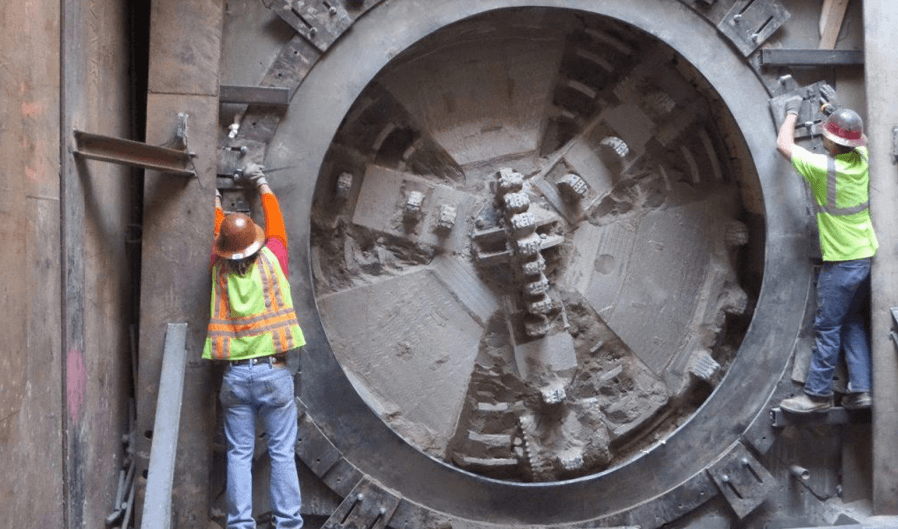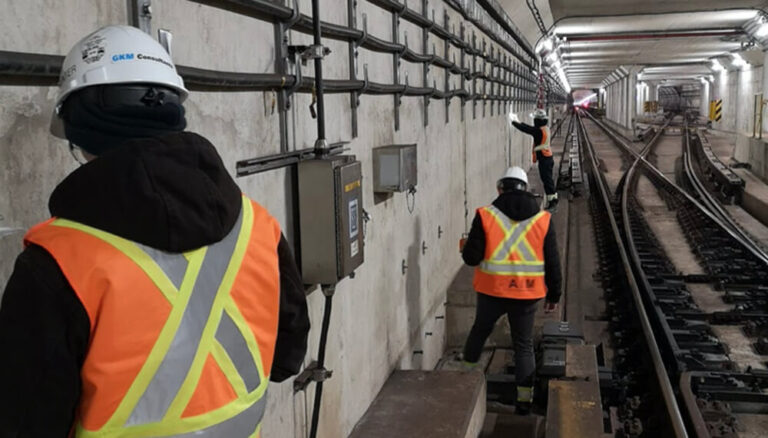Monitoring multiple tunnel boring machine data points during the excavation of over 10,000 feet of large-diameter tunnel.
Problem
SAK Construction, LLC, a national tunnel excavation and pipe rehabilitation contractor based in St. Louis, MO, was awarded a contract to excavate over 10,000 feet of large-diameter tunnel by the Los Angeles Department of Water and Power. Tunnel excavation began in June 2015 and was completed in March 2017.
The contract documents required SAK to develop and maintain a tunnel-boring machine data acquisition system. The intent of this system was to gather and visually display data points from over 60 different components and systems that are a part of the overall tunnel-boring machine.
Multiple tunnel-boring machine data points had to be monitored, i.e., pressure sensors, hydraulic cylinder stroke and pressure, grout, bentonite, soil conditioner volumes, tunnel boring machine alignment information, surface and subsurface settlements, advance rate, cutterhead torque and speed, screw conveyor torque and speed, pressure chamber sensors.
Solution
The project used programmable logic controllers (PLC), pressure sensors, and laptop computers. The pressure sensors and PLC were attached at multiple points along the 200-foot-long tunnel-boring machine.
The data was collected underground in a laptop positioned on the tunnel boring machine. The data was then transmitted to a surface computer by cable. Once at the surface, it was electronically transmitted to the VDV Cloud Servers through Wi-Fi and Internet.
VDV received the raw data every minute and visually displayed it on a custom-built dashboard that stakeholders could then review, making data analysis and automatic notifications when specific parameters exceeded limits easy for all involved.
Overall, we [SAK] are very happy with the VDV Cloud Service and the level of service provided. We will absolutely utilize this service on future tunneling projects.
-Brent Duncan, BGC Engineering
Results
The result with the most impact was related to cutterhead pressure sensors. The client, and their engineers, watched this parameter closely. If these data points were to fall below previously agreed-upon limits, the project would be shut down. If the pressure is too low, the soil in front of the TBM could loosen, resulting in ground loss and a possible sinkhole forming on the surface. If the pressure, on the other hand, is too high, the ground could heave on the surface. Having instant access to these pressure values proved to be incredibly useful.




